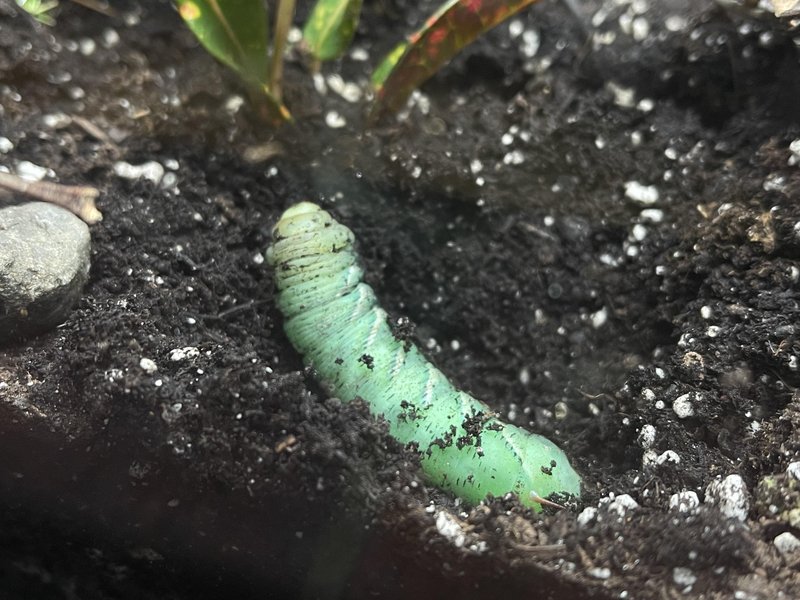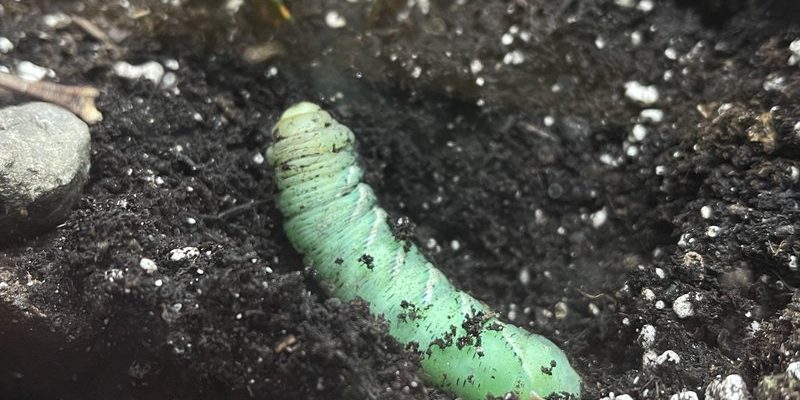
Using hornworms in entomology classes is like having a front-row seat to nature’s magic. Watching these critters grow and transform can ignite curiosity and provide an interactive learning experience that textbooks just can’t match. These squishy green guys are easy to care for, and they offer a brilliant way to bridge theory and practice. With their vibrant colors and dramatic life cycles, hornworms can make the classroom feel more alive.
Let’s dig deeper into why hornworms are a great choice for entomology classes and how educators can utilize them to enhance learning.
What Are Hornworms?
Hornworms are the larval stage of certain moths, most notably the **Carolina Sphinx moth** and the **Five-spotted Hawk moth**. They’re named for the small horn-like structure on their rear ends, which can be a little intimidating but is harmless. Typically, hornworms are bright green, blending in seamlessly with plants like tomato and tobacco, where they often munch away.
These caterpillars can grow to be about 4 inches long, making them a striking sight. Watching them move can be mesmerizing as they inch along, devouring leaves like they’ve just discovered an all-you-can-eat buffet. Their diet and growth also provide excellent opportunities for students to learn about food webs and the role of insects in ecosystems.
Hornworms have a unique life cycle, moving from egg to larva to pupa and finally to an adult moth. This transformation is a fantastic way to illustrate the concept of metamorphosis, a key topic in entomology.
Why Use Hornworms in the Classroom?
There’s something special about having live specimens in the classroom. It’s one thing to read about insects; it’s quite another to observe them in action. Here’s why hornworms make a good fit for modern classrooms:
- Engagement: Students are naturally curious. Observing hornworms encourages questions, discussions, and deeper engagement with the subject matter.
- Hands-On Learning: Working with live hornworms allows students to practice skills like observation, data collection, and even ethical treatment of living organisms.
- Real-World Application: Hornworms can serve as an example of how insects interact with plants and affect agriculture, making it relevant to current environmental discussions.
Using hornworms can create a buzz in the classroom, sparking interest in biology and the natural world. Plus, they’re relatively easy to care for, making them a practical choice for educators.
Setting Up a Hornworm Habitat
If you’re excited about introducing hornworms to your class, the first step is creating a comfortable habitat. Here’s a simple guide to get you started:
1. **Choose a Container:** A clear plastic container works great as it allows students to see the worms from all angles. Make sure it has a secure lid to prevent escape!
2. **Add Ventilation:** Insects need air, so poke small holes in the lid or use a container with built-in ventilation.
3. **Provide Food:** Hornworms love to eat! You can feed them fresh leaves from their favorite plants, like tomato or eggplant. Ensure the food is clean and pesticide-free.
4. **Maintain Temperature:** Keep the habitat in a warm spot, ideally between 70 and 80 degrees Fahrenheit. Too cold, and they might not eat; too hot, and they could die.
Keeping the habitat clean is essential, too. Students can take turns monitoring the container, making it a group project.
Teaching Life Cycles with Hornworms
One of the most exciting things about hornworms is their **life cycle**, which can captivate students of all ages. Their journey from egg to adult moth involves several stages:
– **Egg:** The cycle starts when a female moth lays eggs on host plants.
– **Larva:** Once they hatch, hornworms emerge to chow down on leaves. This stage is where students can observe rapid growth.
– **Pupa:** After a few weeks, they form a cocoon or chrysalis to metamorphose into adults.
– **Adult Moth:** Finally, they emerge as beautiful moths, ready to lay more eggs and continue the cycle.
By tracking these stages, students gain insight into not just hornworms, but the broader concepts of development and adaptation.
Hands-On Activities with Hornworms
Integrating hornworms into your lessons doesn’t have to be boring. Here are a few interactive ideas:
– **Observation Journals:** Have students keep a journal where they document daily changes in the hornworms, including growth and behavior. This helps develop observational skills and encourages creativity in recording data.
– **Metamorphosis Models:** Students can create 3D models or drawings representing each stage of the hornworm’s life cycle.
– **Group Discussions:** Facilitate discussions on the importance of insects in ecosystems. Why do hornworms matter? How do they impact agriculture? This promotes critical thinking and class participation.
– **Research Projects:** Students can research other insects with fascinating life cycles or ecosystems, drawing comparisons to hornworms.
These hands-on activities not only make learning fun but also encourage teamwork and collaboration among students.
Challenges of Using Hornworms
While hornworms are a fantastic educational tool, there are some challenges worth noting:
- Feeding Needs: Hornworms require fresh food regularly, which could be inconvenient if not planned ahead.
- Temperature Control: Keeping the habitat at the right temperature can be tricky, especially in changing seasons.
- Caring for the Specimens: Some students may need guidance on how to handle the worms safely and humanely.
It’s essential to address these challenges head-on. Educators should prepare to offer support and solutions, making sure every student feels comfortable with the living creatures in their care.
Using hornworms in entomology classes can transform the learning experience from theoretical to practical. By observing these lively caterpillars, students can develop a deeper understanding of biological concepts, eco-systems, and the intricate web of life around them.
The beauty of using hornworms is that they offer something unique—lessons about nature through direct, hands-on interaction. As we nurture the next generation of scientists and thinkers, incorporating engaging tools like hornworms can ignite both curiosity and passion for learning. So, why not give it a try? Your students might just become the next big advocates for the tiny creatures that play such a huge role in our world!

